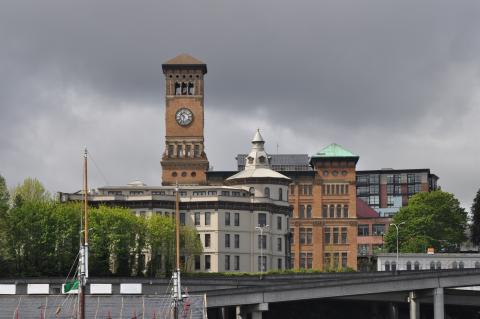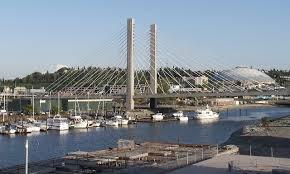Posted February 2018
Incorporated as a city in 1875 following its selection as the western terminal of the Northern Pacific Railroad, Tacoma experienced significant growth as the area’s lumber industry flourished. The city continued to expand with the development of the Port of Tacoma in 1918, which enabled the city to become a major transportation hub.
With nearly 211,280 residents as of 2016, Tacoma is now the third largest city in Washington State. According to the U.S. Census Bureau, roughly three-fifths (61 percent) of city residents are white, 12 percent black, 11 percent Hispanic, 8 percent Asian, and the remaining 8 percent are two or more races.
With over 50 parks and a range of cultural amenities, Tacoma has been recognized as one of the country’s most livable and walkable cities. However, Tacoma still faces significant socio-economic challenges. According to the city’s 2016 Community Needs Assessment, 26 percent of all Tacoma children live in poverty (vs. 15 percent of children in nearby Seattle and 16 percent of children statewide). Between 2015 and 2016 alone, the city’s homeless population increased by 37 percent and the number of chronically homeless people (i.e., homeless for over a year) doubled. While Tacoma’s 2016 unemployment rate was only slightly above the state average (7 percent vs. 6 percent), Tacoma’s black residents were about twice as likely to be unemployed.
Working to address these challenges are a range of community wealth building organizations and initiatives. For example, Shared Housing Services aims to prevent homelessness and foster independence by matching elderly, disabled, and very low-income individuals in need of affordable housing with people willing to provide a bedroom in their home in exchange for rent and/or assistance. To help residents build assets, Sound Outreach’s Hilltop Center for Strong Families bundles employment coaching, access to public benefits, financial education, and counseling services, and provides space to staff from Harborstone Credit Union.
On the public side, the Tacoma Housing Authority (THA) owns over 1,500 affordable housing units and serves 11,000 people annually. Recognizing that successful schools are necessary to ensure children’s success and the creation of strong, healthy neighborhoods, THA catalyzed a pilot Education Project, which includes a children’s savings account program that provides students living in New Salishan with a $50 post-secondary education savings account, matched savings to incentivize family deposits, and financial literacy programs. Also especially innovative is the city’s effort to develop organic lawn and garden products from recycled wastewater biosolids. Branded TAGRO (which is short for Tacoma Grow), the products are donated to community gardens and sold at low cost to commercial and resident users to encourage environmentally-friendly landscaping and gardening practices.
An overview of these and other exemplary community wealth building efforts follows:

